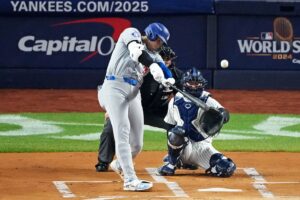With the preseason underway, Major League Baseball is preparing for another season in its illustrious history. But never before has MLB entered another campaign with so much dubiousness and skepticism. Many unrestricted free agents are yet to be signed. Teams are still keenly invested in not paying players lucrative contracts. And most of all, nothing appears to be on the horizon to address the pressing challenge of pace of play.
MLB Reportedly Nearing Deal to Increase Roster Size for 2020 Season
According to a report by Ronald Blum with the Associated Press, the limit for active players on the roster starting September 1 will decrease from 40 to 28 as a part of the reported deal. Pending a finalized agreement with the MLB and MLBPA, there will be a shift in the roster size for baseball teams. Starting in the 2020 season, franchises would be able to have 26 players instead of 25 on the active roster.
The agreement calls for a limitation in the number of call-ups from the minor league level, particularly when it comes to pitchers.
After September 1, there will be 14 pitchers on the roster instead of 13. The minimum roster size will go up by one, from 24 to 25. While this alteration will provide more players an opportunity to play on a team, it fails to address the crucial concern that is driving many young fans away from the game. It is too long.
This switch in roster size is seen as an attempt for both sides to reach an agreement in the lead up to the collective bargaining negotiations when the CBA expires in 2021. After two sluggish free agency periods, it is evident that many baseball organizations are “tanking” by not making a splash and spending lots of money on unrestricted free agents. With the recent success of rebuilds such as the Chicago Cubs and Houston Astros, teams are likely to hold onto their financial resources, rather than take the big gamble to improve.
So by forcing teams to add an extra roster spot, MLB sees this as an incentive for the front office to load up players, reducing the amount of unsigned free agents on the market.
MLB Roster Change Doesn’t Address Pace of Play
While MLB sees this roster change for 2020 to be positive, it is a band-aid solution to address the real issues that are affecting professional baseball. The main impediment facing MLB is the pace of play.
The 2018 World Series was one of the slowest on record, in large part due to the Game 3 thriller that saw the Los Angeles Dodgers win in 18 innings against the Boston Red Sox. In the eastern time zone, it was well past 3:30 in the morning when the game concluded.
Game 3 of the World Series was one example in a large conglomeration of statistics that point to slow play. In the 2018 regular season, there were record highs in pitches per plate appearance (3.9) and pitchers used per game (4.36). Last year’s season batting average was .248, the lowest since 1969. This is a direct result of managers implementing numerous defensive shifts, leading to more foul balls.
Pitchers getting stronger and throwing faster have flourished the number of strikeouts, as batters look for the big home run instead of the base hit. In addition, because of the lack of rules to limit the number of pitching changes, managers in the late stages of games feel compelled to switch pitchers in order to win the match-up battle.
By adding one more roster spot, most teams will use this for adding an extra pitcher. As a result of increasing the active pitchers on a roster from 13 to 14 after September 1, it serves as an impetus for managers to bring in more relief pitchers into games. With teams already relying on bullpens to start as early as the fifth inning, the increase in roster size will detract from the pressing need to speed the game up.
Where Does MLB Go From Here?
In addition to not addressing the pace of play, the increase in roster size will impact the relationship between the minor and major leagues in terms of calling players up. By reducing the active players limit from 40 to 28 on September 1, teams will not be motivated to call players up from the minor leagues.
For many Triple-A players, September is the opportunity to get their chance to showcase their talent in MLB. To give the front office of a professional baseball organization an opportunity to witness a future young star, with the hopes of putting them in the starting lineup the following season. The new roster rules will disincentivize MLB organizations from doing this.
When asked about addressing pace of play, Commissioner Manfred offered a blanket statement about proposals that are coming the MLB’s way.
“Some of these items need to be part of broader discussions that certainly will continue after opening day,” Manfred said. “And I hope we can focus on some of the issues that need to get resolved quickly in the interim.”
By implementing short term changes, Major League Baseball is turning fans away from America’s national pastime. With the CBA set to expire in 2021, time is of the essence for MLB to address pace of play.
The issues hindering baseball’s progress are not going away. Several players have voiced their frustrations. It is now MLB’s turn to step up to the plate and knock out of the park proposals to improve the game’s popularity for future generations.
Main Photo:
Embed from Getty Images






